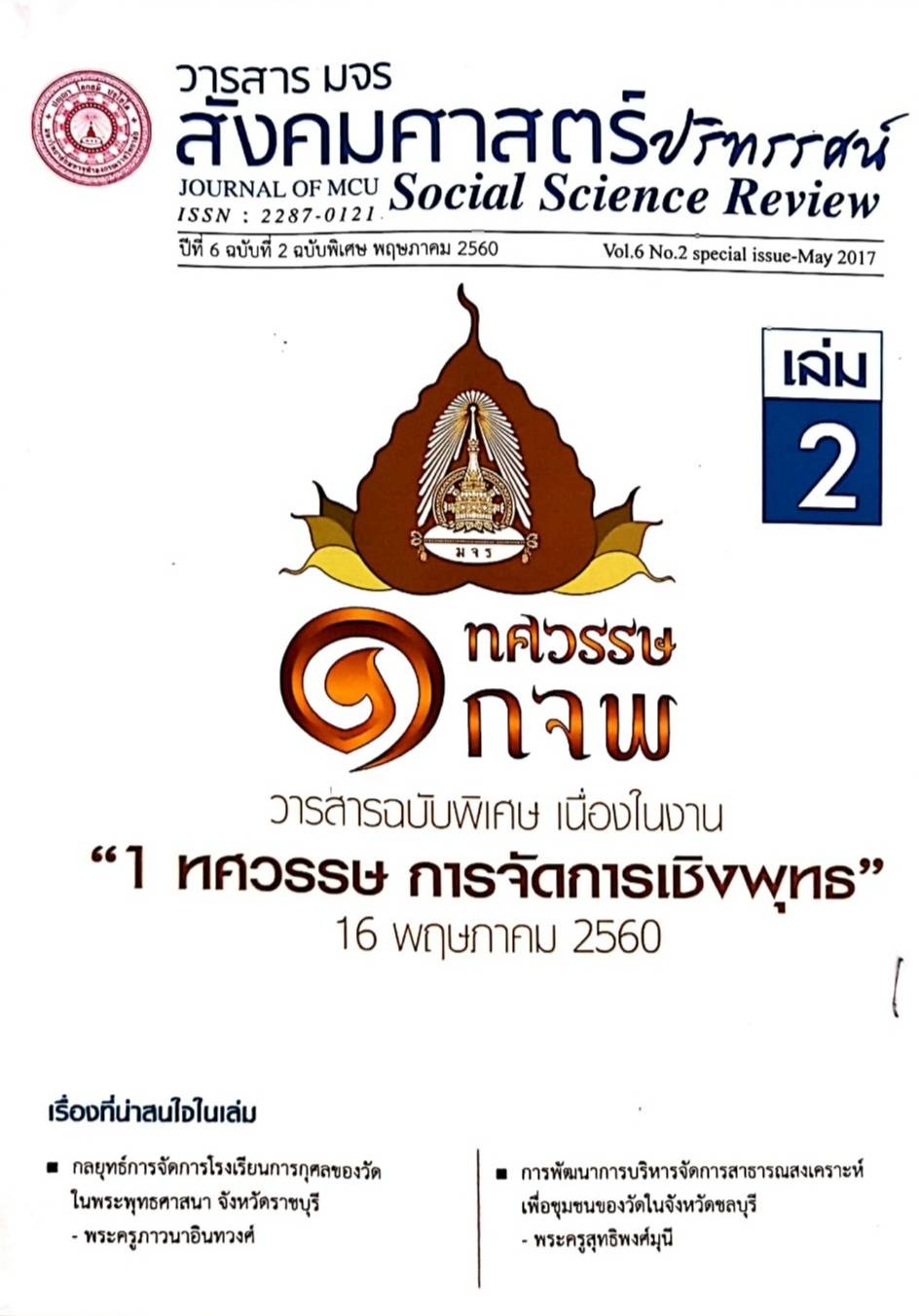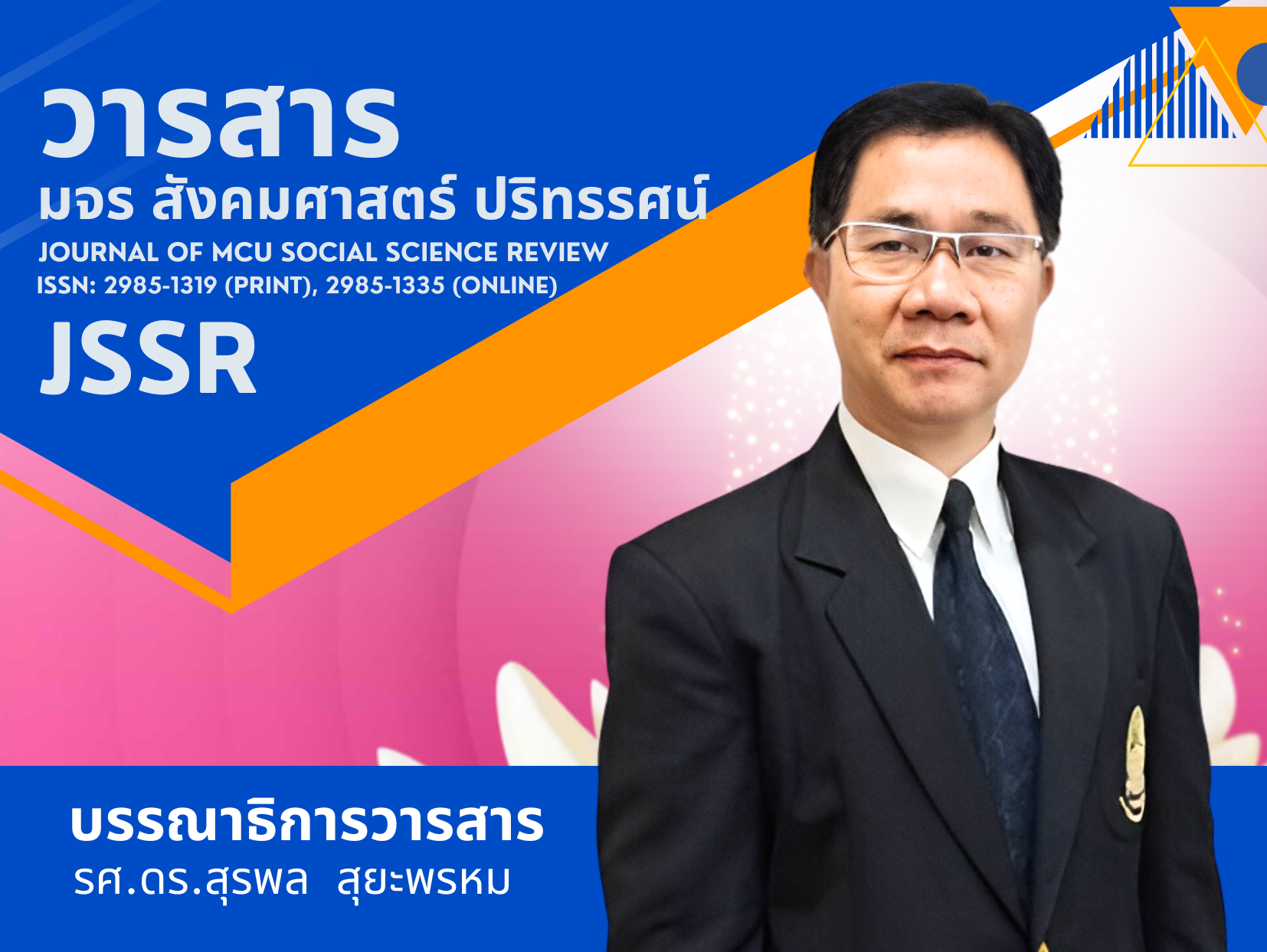ศึกษาวิเคราะห์ คุณค่าและความสำคัญของสลากย้อมที่มีต่อสังคมและวัฒนธรรม ลำพูน
คำสำคัญ:
คุณค่าและความสาคัญ, สลากย้อม , สังคมและวัฒนธรรมบทคัดย่อ
การศึกษาวิจัยนี้ เป็นการวิจัยเชิงคุณภาพ (Qualitative Research) เน้นการศึกษาวิเคราะห์ และตีความข้อมูลจากการวิจัยภาคสนาม และศึกษาตีความ วิเคราะห์ และสังเคราะห์โดยศึกษาจากแหล่งข้อมูลที่เกี่ยวข้อง ผลการวิจัยพบว่า สลากภัตในสมัยพุทธกาลมีความเป็นมาจากการอนุญาตภัตทั้ง 7 ของพระพุทธเจ้า หนึ่งในนั้นคือสลากภัต และเรื่องราวของนางยักษิณีที่มีเวรต่อนางกุมาริกาจนกลายเป็นที่มาของการถวายทานสลากภัตในสมัยพุทธกาล สลากภัตได้พัฒนาการมาเป็นลำดับและเข้าสู่ประเทศไทยตามการเผยแผ่พระพุทธศาสนา ในภาคเหนือนั้นมีประเพณีสลากภัตที่มีความโดดเด่น โดยเฉพาะที่จังหวัดลำพูน คือ สลากย้อม สลากย้อมในอดีต เป็นการถวายทานของหญิงสาวที่มีความพร้อมในการออกเรือนแต่งงาน เป็นกุศโลบายหนึ่งในการให้ผู้หญิงได้รู้จักเก็บออมทรัพย์สินเงินทอง ประหยัดมัธยัสถ์ และรู้จักการทำบุญสุนทาน ความสำคัญของสลากย้อมที่มีต่อสังคมวัฒนธรรม ลำพูน ปรากฏในเรื่องของการพัฒนามนุษย์ ที่สลากย้อมเป็นแหล่งเรียนรู้ทางวัฒนธรรมและมีหลักธรรมปรากฏอยู่ในวิถีของสลากย้อม การมครองและสวัสดิการสังคม ปรากฏในด้านการช่วยเหลือทางสังคมที่ชุมชนเป็นผู้ช่วยเหลือวัด และชุมชนใช้ประโยชน์ร่วมกันจากวัดอันเป็นผลมาจากการทำสลากย้อม ด้านสิทธิและความยุติธรรมทางสังคม ปรากฏในแง่ของการสร้างความเท่าเทียมกันทางสังคมระหว่างผู้ชายกับผู้หญิงและเป็นการให้เกียรติสตรีเพศในการมอบบทบาทผู้นำในการทำสลากย้อม การสร้างความเสมอภาคและสิทธิเท่าเทียมกันในสลากภัตทานของพระสงฆ์ ด้านความยั่งยืนทางด้านสิ่งแวดล้อม ปรากฏในด้านภูมิปัญญาด้านการจัดการสิ่งแวดล้อมและการประยุกต์ใช้สิ่งแวดล้อมในชุมชนเป็นเครื่องมือในการทาต้นสลากย้อม และการใช้ไม้ วัสดุธรรมชาติในการทำสลากย้อม รวมถึงการประดับตกแต่งใสวยงาม ด้านการสร้างอัตลักษณ์ปรากฏในเรื่องของการสร้างอัตลักษณ์ร่วมกันของสลากย้อมที่คนจังหวัดลาพูนมุ่งหวังที่จะเป็นเจ้าของร่วมกัน และด้านการลดช่องว่างทางการพัฒนา ปรากฏในเรื่องของการลดช่องว่างทางเศรษฐกิจ คือระบบเศรษฐกิจชุมชน
References
นิรันดร์ ภักดี. (2556). “บทบาทและคุณค่าของงานปอยหลวงต่อสังคมวัฒนธรรม จังหวัดเชียงใหม่
และลำพูน”. วิทยานิพนธ์ปรัชญาดุษฎีบัณฑิต. บัณฑิตวิทยาลัย : มหาวิทยาลัยราชภัฏเชียงใหม่.
ประพันธ์ กุลวินิจฉัย. (2555). เทศกาลและพิธีกรรมพระพุทธศาสนา. พิมพ์ครั้งที่ 2, กรุงเทพฯ :มหาจุฬาลงกรณราชวิทยาลัย.
มหาจุฬาลงกรณราชวิทยาลัย. (2539). พระไตรปิฎกภาษาไทย ฉบับมหาจุฬาลงกรณราชวิทยาลัย.กรุงเทพฯ : มหาจุฬาลงกรณราชวิทยาลัย.
สรัสวดี อ๋องสกุล. (2557). ประวัติศาสตร์ล้านนา. พิมพ์ครั้งที่ 10. กรุงเทพมหานคร : อมรินทร์พริ้นติ้งแอนด์พับลิชชิ่ง.
Downloads
เผยแพร่แล้ว
How to Cite
ฉบับ
บท
License
Copyright (c) 2020 วารสาร มจร สังคมศาสตร์ปริทรรศน์

This work is licensed under a Creative Commons Attribution-NonCommercial-NoDerivatives 4.0 International License.
เพื่อให้เป็นไปตามกฎหมายลิขสิทธิ์ ผู้นิพนธ์ทุกท่านต้องลงลายมือชื่อในแบบฟอร์มใบมอบลิขสิทธิ์บทความให้แก่วารสารฯ พร้อมกับบทความต้นฉบับที่ได้แก้ไขครั้งสุดท้าย นอกจากนี้ ผู้นิพนธ์ทุกท่านต้องยืนยันว่าบทความต้นฉบับที่ส่งมาตีพิมพ์นั้น ได้ส่งมาตีพิมพ์เฉพาะในวารสาร มจร สังคมศาสตร์ปริทรรศน์ เพียงแห่งเดียวเท่านั้น หากมีการใช้ภาพหรือตารางหรือเนื้อหาอื่นๆ ของผู้นิพนธ์อื่นที่ปรากฏในสิ่งตีพิมพ์อื่นมาแล้ว ผู้นิพนธ์ต้องขออนุญาตเจ้าของลิขสิทธิ์ก่อน พร้อมทั้งแสดงหนังสือที่ได้รับการยินยอมต่อบรรณาธิการ ก่อนที่บทความจะได้รับการตีพิมพ์ หากไม่เป็นไปตามข้อกำหนดเบื้องต้น ทางวารสารจะถอดบทความของท่านออกโดยไม่มีข้อยกเว้นใดๆ ทั้งสิ้น




